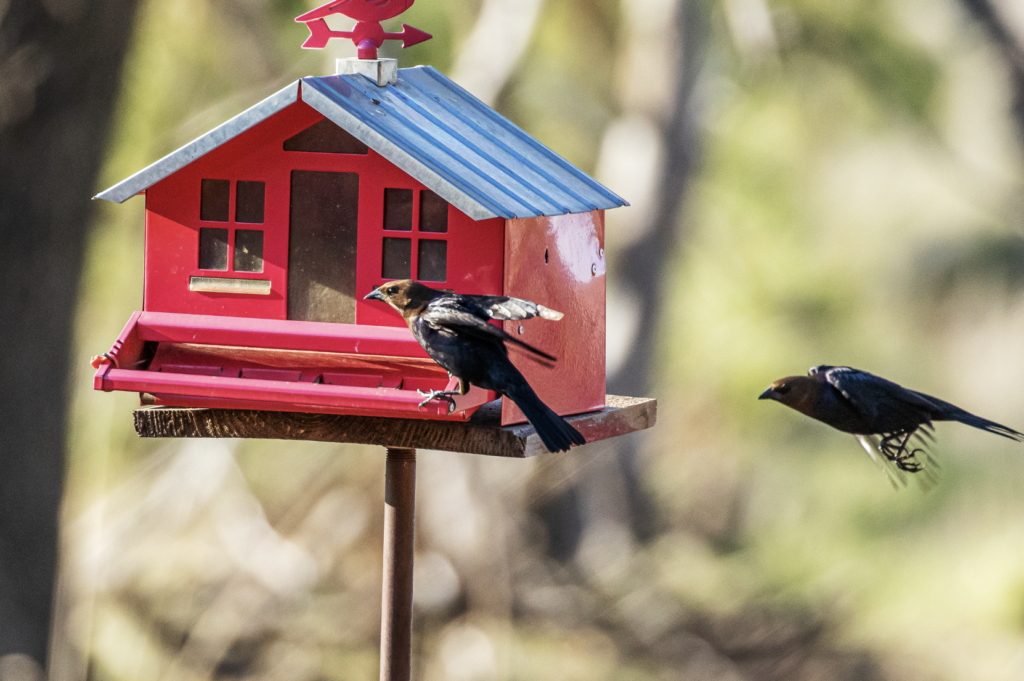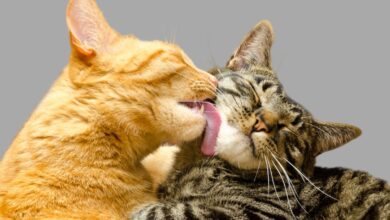Understanding Bird Behavior : A Guide to Your Feathered Friends’ Actions

Birds are fascinating creatures with complex behaviors that can sometimes be difficult to interpret. Understanding bird behavior is key to building a stronger bond with your pet bird or even appreciating the wild birds in your backyard. By learning what various actions, sounds, and movements mean, you’ll be able to better care for your feathered friends and ensure they are healthy and happy. In this article, we’ll explore common bird behaviors and what they can tell you about a bird’s emotions, health, and needs.
1. Preening and Feather Maintenance
Preening is one of the most common behaviors you’ll observe in birds, both wild and domestic. This is how birds keep their feathers in top condition.
- What It Means: Birds use their beaks to clean their feathers, remove dirt and parasites, and align feathers to maintain insulation and waterproofing. A bird that is regularly preening is generally healthy and content.
- Warning Signs: If a bird over-preens or pulls out its feathers, it may be a sign of stress, boredom, or illness. In such cases, you may need to consult a vet or evaluate its environment.
2. Singing and Vocalizing
Birds are known for their songs and calls, which can range from beautiful melodies to loud squawks, depending on the species.
- What It Means: Vocalizations are used for communication. Birds sing to attract mates, establish territory, or communicate with other birds. For pet birds, chirping and singing often indicate happiness or a desire for attention.
- Warning Signs: If your bird becomes unusually quiet or starts making distressed sounds, it could be a sign of discomfort, loneliness, or illness.

Check Also : Best Bird Foods: Top Picks to Keep Your Birds Healthy and Happy
3. Fluffing Feathers
You may notice your bird fluffing its feathers from time to time. This behavior serves a few purposes.
- What It Means: Birds fluff their feathers to regulate body temperature, especially when they are cold. Fluffing can also be a sign of relaxation, particularly if the bird is settling in for a nap.
- Warning Signs: Persistent feather fluffing, especially if accompanied by lethargy, may be a sign of illness. If your bird is constantly puffed up and not moving around much, it’s time to see a vet.
4. Head Bobbing
Head bobbing is a common behavior, especially in younger birds.
- What It Means: Birds often bob their heads when they are excited, seeking attention, or hungry. In pet birds, this behavior can also be a way of communicating with their owner.
- Warning Signs: If head bobbing is paired with other unusual behaviors, such as vomiting or imbalance, it could indicate a health issue.
5. Beak Grinding
Beak grinding is often heard at the end of the day as birds wind down for the night.
- What It Means: This is a sign of contentment and relaxation. Birds grind their beaks as they prepare to sleep, much like humans settle into a comfortable position.
- No Warning Signs: Beak grinding is a normal, healthy behavior in most birds.
6. Regurgitation
Regurgitation is a behavior where birds bring up food from their crop and offer it to a mate, their owner, or a companion.
- What It Means: Regurgitation is a sign of affection and bonding. In the wild, birds regurgitate food to feed their mates or chicks. Pet birds may regurgitate to their human companions as a form of affection.
- Warning Signs: While regurgitation is generally normal, excessive or constant regurgitation could indicate a digestive issue, and it’s best to consult a vet if you’re unsure.
7. Wing Stretching and Drooping
Birds stretch their wings and legs as a way to get comfortable, much like humans stretch after sitting for a while.
- What It Means: A full-body stretch is a sign that a bird feels safe and comfortable in its environment. Birds may also stretch to warm up their muscles before flying or moving around.
- Warning Signs: If a bird’s wings are drooping continuously and it looks weak or tired, it could be a sign of illness or injury, requiring medical attention.
8. Tail Wagging and Fanning
Tail movements in birds can be quite expressive and tell a lot about their mood.
- What It Means: Quick, side-to-side tail wagging often indicates excitement or happiness. Some birds fan their tails when they are trying to impress a mate or establish dominance.
- Warning Signs: If your bird’s tail bobbing is accompanied by labored breathing, it may indicate respiratory issues.
9. Aggression and Biting
Aggression is less common in birds than in some other animals, but it can occur in certain situations.
- What It Means: Birds may become aggressive or bite if they feel threatened, scared, or protective of their territory. This behavior may also surface if the bird is hormonal, especially during breeding season.
- Warning Signs: Sudden changes in aggression levels could be a sign of stress, fear, or discomfort. If your pet bird is biting more frequently, it might need more attention, a change in environment, or even a visit to the vet.
10. Silent Observation
Sometimes, birds will remain still and quiet for long periods, simply observing their surroundings.
- What It Means: This behavior is typically seen in wild birds when they are watching for predators or in pet birds when they are getting used to a new environment. It can indicate curiosity or caution.
- Warning Signs: Prolonged stillness, particularly if accompanied by lethargy or loss of appetite, can be a sign of illness, and you should consult a vet if it persists.
Conclusion
Understanding bird behavior is crucial for ensuring the well-being of your feathered friends. From preening and singing to stretching and aggression, each action tells you something about your bird’s health and emotions. By paying attention to these behaviors, you’ll be better equipped to provide the care your bird needs to thrive in its environment.





